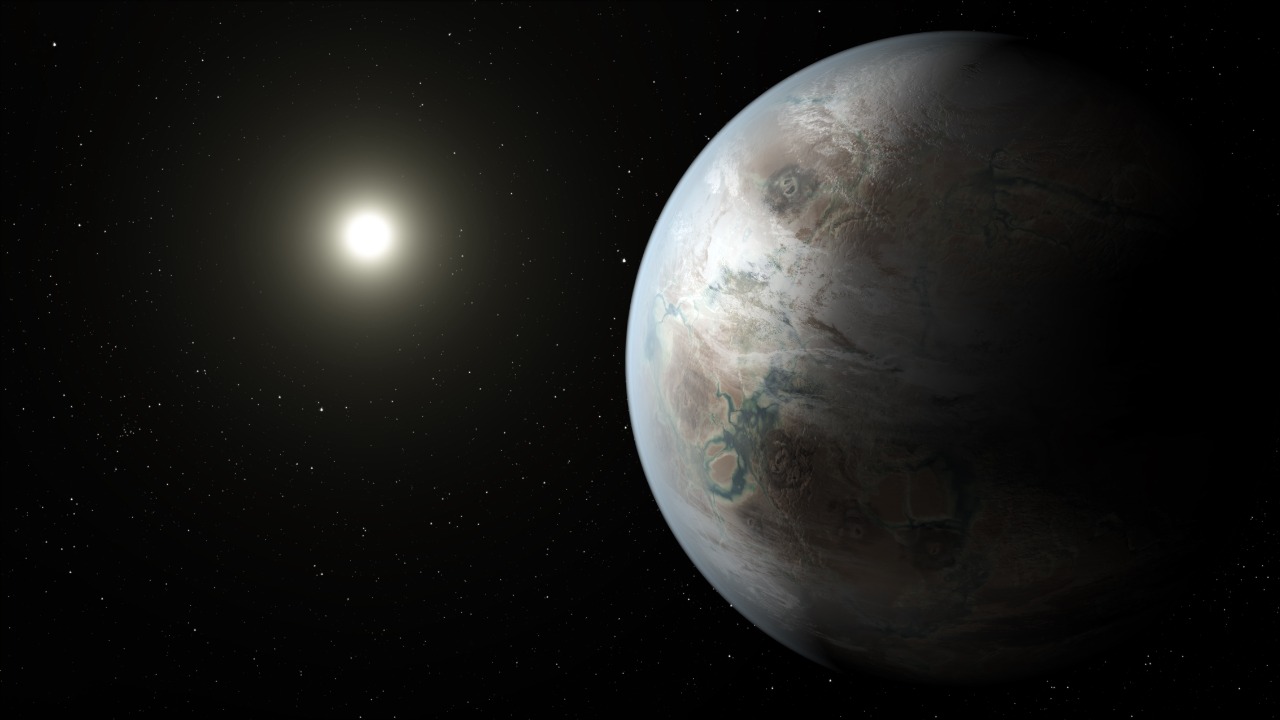
Kepler-452b, a super-Earth orbiting a sun-like star just 1,400 light-years away, has emerged as a prime candidate for harboring alien life. Despite high hopes and predictions that we could discover intelligent alien life as early as 2020, we have yet to confirm any signs of extraterrestrial existence. The ongoing quest for alien life continues to face persistent challenges, as highlighted by recent analyses.
Discovery of Kepler-452b
On July 23, 2015, NASA’s Kepler mission announced the discovery of Kepler-452b, a super-Earth located in the habitable zone of its star. The planet, which is about 1.6 times the diameter of Earth, orbits a G2-type star similar to our sun every 385 days. The Kepler space telescope identified the planet using the transit method, confirming it as the first near-Earth-sized world in a potentially habitable orbit around a sun-like host star.
From the moment of its discovery, Kepler-452b was framed by the media as humanity’s best chance to find alien life. Its Earth-like characteristics and relative proximity to us, compared to other exoplanets, made it a prime candidate in the search for extraterrestrial worlds [source].
Characteristics Making It a Prime Candidate
Kepler-452b is located 1,400 light-years from Earth in the constellation Cygnus. Despite the vast distance, its location allows for potential future observations with advanced telescopes. The planet’s equilibrium temperature is estimated at around 265 K (-8°C), suggesting conditions suitable for liquid water if it has a substantial atmosphere.
Classified as a super-Earth, Kepler-452b has a mass potentially 5 to 10 times that of Earth. This size could support diverse geological and atmospheric features conducive to life, further enhancing its candidacy in the search for alien life.
Why It’s Considered “Nearby” in Cosmic Terms
In cosmic terms, Kepler-452b’s 1,400 light-year distance is relatively accessible for spectroscopic analysis, especially when compared to more distant exoplanets. The star it orbits is approximately 6 billion years old, older than our 4.5-billion-year-old sun. This could imply a more evolved planetary environment that has been stable for billions of years.
When Kepler-452b was detected in 2015, its proximity to Earth-like conditions in a galactic neighborhood with many sun-like stars enhanced its potential for study [source].
Potential for Habitable Conditions
Kepler-452b is located in the habitable zone of its star, where stellar radiation could maintain surface temperatures allowing for the presence of liquid water, a key ingredient for life as we know it. However, uncertainties in its atmospheric composition remain. For instance, a thick atmosphere could retain heat, while a thin one could lead to a runaway greenhouse effect.
The hype around Kepler-452b’s discovery in 2015 was tied to optimism about the broader search for alien life. The planet was seen as a stepping stone for detecting biosignatures like oxygen or methane, which could indicate the presence of life.
Challenges in Detecting Alien Life There
There are significant technical hurdles in the search for alien life on Kepler-452b. The faintness of the starlight from its host star requires next-generation instruments like the James Webb Space Telescope for transit spectroscopy. Additionally, there are several reasons why we haven’t found alien life yet, including the possibility that intelligent civilizations are rare or that there are detection biases in current surveys [source].
Past predictions, such as the speculation in 2019 that 2020 might yield evidence of intelligent alien life, have not come to fruition. These timelines have shifted due to observational limitations [source].
Future Missions and Observation Strategies
Planned follow-up observations with telescopes like the James Webb Space Telescope and the upcoming Extremely Large Telescope aim to analyze Kepler-452b’s atmosphere for habitability markers starting in the mid-2020s. There is also a need for improved radial velocity measurements to determine the planet’s exact mass and density, building on the transit data from 2015.
Multi-wavelength studies could probe for signs of water vapor or organic compounds, positioning Kepler-452b as a test case for exoplanet habitability assessments.
Implications for the Broader Search for Life
Kepler-452b’s profile influences the Drake Equation estimates for communicative civilizations. Its designation in 2015 as a top candidate for the search for alien life has had a significant impact on these estimates [source].
There are ongoing debates about the lack of detections of alien life, fueled by insights into reasons such as the “great filter” hypothesis or barriers to interstellar travel [source]. The evolution of expectations from the forecast for 2020 discoveries emphasizes a shift toward long-term, patient exploration strategies [source].
More from MorningOverview